
BMW X5 4x4 (2013-2018) review
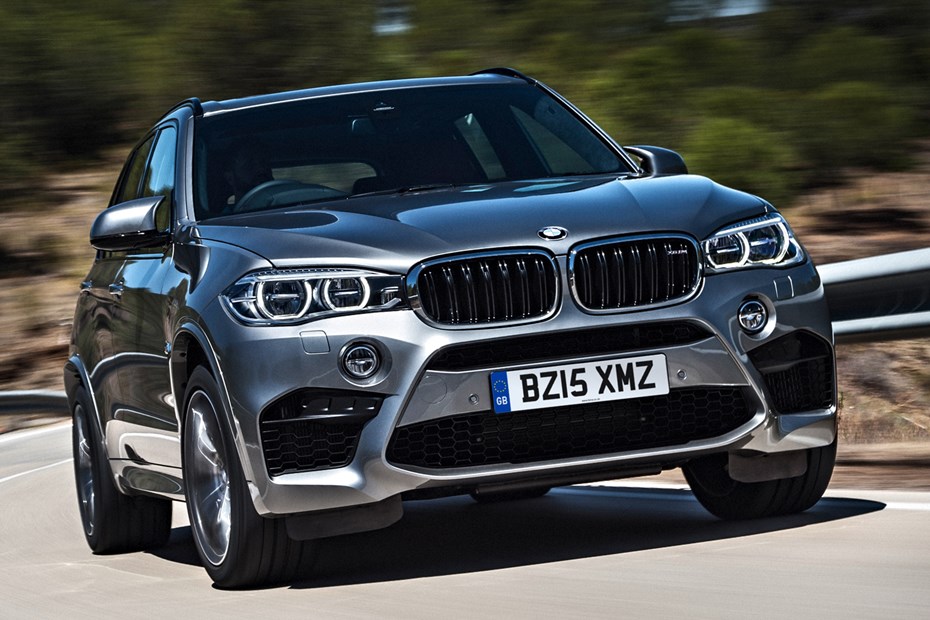
At a glance
| Price new | £43,600 - £95,045 |
|---|---|
| Used prices | £7,447 - £30,214 |
| Road tax cost | £20 - £760 |
| Insurance group | 37 - 50 |
Get an insurance quote with

|
|
| Fuel economy | Not tested to latest standards |
| Range | 467 - 991 miles |
| Number of doors | 5 |
| View full specs for a specific version | |
Available fuel types
Petrol
Diesel
Hybrid
Pros & cons
- Excellent used value
- Best model can tow 3,500kg
- Loaded with technology
- Expensive to maintain well
- Lacks classic luxury feel of some rivals
- Feels very large to drive around town
BMW X5 4x4 (13-18) rivals
Overview
The third generation BMW X5, launched in 2018, faced the widest and most competent range of rivals yet for the popular SUV sector. One of the first premium, sporty 4x4s, the X5’s success inspired challengers such as the Audi Q7, Mercedes-Benz GLE and Range Rover Sport, all of which are worth considering when shopping for the best used family 4x4s.
With used values bringing the earliest X5s well under £15,000, and the appeal of ULEZ compliant diesel and seven seats, it’s one of the best options for an affordable large SUV – at least, on paper. If nothing else the BMW’s wider pool of independent specialists and OEM parts suppliers ensure that it’s a safer bet than a Porsche Cayenne for a similar budget.
How affordable that second hand BMW will be in the long run depends on how carefully you choose from the cars for sale at the time; here’s the Parkers guide to finding the best 2013-18 (F15) BMW X5.
Used BMW X5 (F15) buying guide
You can consider the third generation BMW X5 a substantial refresh of the second generation X5 (E70), itself quite heavily based on the original E53 version. This is why the production run is relatively short, at just five years – the next generation X5 (G05) introduced at the end of 2018 moved onto a completely new architecture.
Crucially for buyers in the UK, the difference between a 13-plate, E70 X5 and a 63-plate F15 is more than just a couple of thousand pounds in the classified ads. All diesel F15 X5s are ULEZ compliant, at least unless the government moves the goalposts to RDE2 standards.
Choose your trim based on taste, as the whole range is generously equipped, and we recommend the xDrive30d as the best all-rounder. It’s quick enough, smooth and refined, with good economy for the size of car and overall, a good track record for reliability.
Are all BMW X5s 4x4?
No. There’s an entry level model, the sDrive25d, which is rear-wheel drive. While it’s a very useful substitute for a family estate car or MPV, we don’t recommend it as a used buy because it has one of BMW’s less-reliable engines, and the cost difference is not the same as buying new.
Which BMW X5 to avoid?
As above, the sDrive25d and xDrive25d use the 2.0-litre four-cylinder diesel, which has a history of timing chain failure and other issues. They also can’t tow as much as the 3.0-litre or petrol models. We’d also avoid any high-performance X5 such as the M50d or X5 M which has not been maintained to a high standard – rectifying neglect will be very expensive.
Is the BMW xDrive40e plug-in hybrid a good used buy?
Unless you have the ability to charge it up regularly – and at low cost – the plug-in hybrid xDrive40e is the weakest model in the range, and falls short of the standards set by the best used plug-in hybrids. It loses some boot space, adds complexity, and isn’t particularly economical when the battery has been depleted. If you regularly make short drives, have a driveway and sustainable green energy gadgets such as powerbanks and solar panels, then it might make sense.
2013-2018 BMW X5 problems and what to watch out for
1. Pale interiors and hard-working 4x4s
Yes, it’s a fairly obvious one, but we came across this several times – as a premium SUV the BMW X5 is often specified with luxurious, high-quality and bright interior trim. As a robust 4x4 with a better reputation than a Range Rover, it’s often bought by the second or third owner for more serious duties.
We’ve seen several otherwise very appealing older examples with cream leather that looks like it’s been used to clean up a bonfire. It suggests a lack of care elsewhere to get the job done, so we’d check towing electrics, tyres, boot trim and rear seats, and service history on any car presented for sale in that state. Sellers – clean your car properly before sale.
2. sDrive25d/xDrive25d N47 2.0-litre diesel timing chain
Previously a BMW 25 meant a 2.5-litre straight six, but since the late 1990s the tendency to badge turbocharged models as ‘equivalent to’ numbers means every BMW is slightly different. In this case, the 25 is a 2.0-litre four-cylinder diesel, either N47 or B47/B47TU1 depending on age.
Listen at the back of the engine for a rattle on startup, and metallic chattering at idle. If present, it’s likely that the timing chain guides have failed, or the chains have stretched. Either way, it’s a four-figure bill to fix it, so we’d look elsewhere.
If the car has been serviced with 10-12,000 mile intervals rather than the BMW variable scheme, which tends towards 18,000 miles, and it’s running well then it may do many thousands of miles before a problem occurs. Most BMW specialists recommend replacement after 80-100,000 miles regardless, including the newer B47 engine.
3. Accident damage, lights and safety equipment
It’s a good idea to get a vehicle history check before buying a car of this complexity and popularity anyway, but if you’re looking at buying a repaired write-off to save some money at the bottom end of the market, check that any replacement electronic components and modules are correctly installed, and of the right spec for the car’s original equipment.
Some aftermarket lights age very quickly, developing leaks and failed reflectors in a matter of months after the year’s warranty expires. It’s also possible that someone might replace a car’s adaptive headlights with much cheaper standard units, and code them out in software. If there’s no paperwork with the car, you can use a VIN decoder to get the original build and options.
This is particularly important with regard to Driving Assistant sensors and modules. These need to be correctly calibrated to work, and a bad installation could lead to an accident or unexpected behaviour.
4. Service history – more than just oil and filters
Many BMW X5s were sold with an inexpensive five-year servicing package, which was based on the variable intervals and focused on the bare minimum requirements to ensure ex-fleet and PCP vehicles returned at the end of the contract with a ‘full service history’. Once the cars have exceeded 40,000 miles you want to look for coolant changes, brake fluid change, and crucially, differential and transfer case fluid changes.
Not always part of the scheduled maintenance, the transfer case and differential fluid can age quickly and be burned and full of particles from clutch or gear wear as early as 40,000 miles. Changing transfer case fluid does require the use of a diagnostic computer that can reset the clutch pack so it compensates for the new oil correctly.
5. ZF8 HP automatic gearbox
Some dealers still maintain the myth that these gearboxes are ‘sealed for life’. That’s fine if you want the vehicle’s life to be about 100-120,000 miles so you can sell a new one, but it’s not much fun if you just bought a 140,000 mile one that’s never been serviced.
ZF recommend oil changes between 60-80,000 miles, depending on how hard the car’s been working. As with the transfer case, you need diagnostic software to do it properly – but get it done before the gearbox is showing signs of trouble, and you’re far less likely to have problems.
What problems can you have with the X5’s automatic gearbox? Check the selector is working, including paddles where fitted, and then feel for shuddering or grabby, jerky movements when pulling away, slurred or jolting shifts, and a general lack of responsiveness. In good order these gearboxes are excellent, so if something feels wrong it probably is.
6. BMW X5 V8 petrol – coolant leaks
The BMW N63 V8 used in the xDrive50i and X5 M is prone to coolant leaks from a pipe located on top of the engine. Called the coolant transfer pipe, it sits between the banks of the V8 layout and leaks at the ends where it joins onto the water pump and rear outlet.
Before starting the car sniff check the coolant level and sniff under the bonnet for the distinctive sweet, sticky odour of antifreeze. As long as the car is cold, remove the expansion bottle pressure cap and inspect the rubber seals as well – they’re prone to flattening over time, leaving a poor seal which can also cause the distinctive coolant smell but is much cheaper to rectify.
Shine a torch around the centre V of the engine, looking for crystalline stains around the hose connections – if you can, check the back as well (access is tight). You may want to consider a pressure test, which will reveal leaks around the whole system.
It’s a simple component, but because it’s buried under the intake manifold, multiple hose and wiring connections, hardware repair is very expensive. Owners only usually notice a problem when the damage is serious.
There are some ‘cheap’ fixes – such as a metal stent that can be fitted to bridge the seal at the front of the engine – but if the coolant leak is serious then the pipe itself will need replacement. On top of the need to fix the leak, it’s worth bearing in mind that a BMW driven with a persistent leak may have been overheated, so be very wary of taking on a car with any signs of coolant spill or staining.
Preventative maintenance pays off here, but even that won’t be cheap. It’s a design flaw and eventually any unmodified BMW N62 or N63 V8 will leak from this transfer pipe.
7. BMW 3.0 diesel – swirl flaps, EGR, and fault codes
When looking at an xDrive30d or 40d start with your handy on-board diagnostic code reader. Ideally, you need an expert technician with BMW-specific software (there are many solutions that use laptops or phones), but a straightforward code reader might give enough info to avoid a bad buy.
In order of significance, the EGR (exhaust gas recirculation) valve cooler can leak, and this is hard to detect. It causes slow coolant loss initially but can do serious damage if not caught in time. Next, the swirl flaps (butterfly valves in the intake manifold) can get gummed up with oily carbon deposits – even on cars driven and maintained well. The swirl flaps can also wear out prematurely due to the design of their pivots, and any play will cause an error and poor running.
If you feel confident using a borescope, looking inside the inlet manifold through the throttle body can reveal many of these potential issues, as any sign of cruddy, black and oily buildup (rather than just vapour deposits) near the engine part of the manifold is a sign of problems to come.
8. BMW diesels – all models – high pressure fuel pump (HPFP)
On both 2.0-litre and 3.0-litre diesel X5s the high-pressure fuel pump can fail. This is unlikely to be picked up on a car during a test drive, as if the pump has failed, the car won’t drive. However, a car that has suffered a HPFP failure and been repaired by a DIYer, independent garage or part-time trader by simply replacing the pump with a used part is likely to display ongoing issues.
When the pump fails it tends to fill the fuel system, tank, lines and injectors with debris. If there’s an invoice for a high-pressure fuel pump replacement, make sure it also details flushing of the lines and cleaning of the injectors at a minimum – given the pressure of fuel delivery and precision of the tiny nozzles in a modern diesel injector, replacement is often the only solution.
Misfuelling and some additives, such as products that claim to clean carbon from inlet manifolds, can contribute to failure of the diesel pump.
9. BMW diesels – all models – DPF and oil levels
Like any modern diesel the N47 and N57 engines (and later B47/B57 versions) have a DPF that won’t do well under short trips and will, eventually, need replacement. The X5 also uses AdBlue (which is why it’s ULEZ compliant from the start of this generation), and that means NOx sensors, tanks and level sensors to consider. Check that the AdBlue level is being reported sensibly on the dash.
One good way of checking for a DPF that is due for replacement is to check the oil. A lot of BMW documentation (and websites) claim that the X5 doesn’t have a dipstick, but chances are, it does.
The dipstick is not obvious (BMW prefer users to look at the oil monitor in iDrive), but it’s at the rear of the passenger side engine bay on the six-cylinder models and looks like a flat, black plastic end cap on a pipe. If the level is significantly over the full mark, sniff for diesel fumes. If you really can’t find a dipstick the oil level can be checked via the car status in iDrive, and you can check for diesel fumes by sniffing the oil filler cap. It’s not as accurate as seeing the oil condition on a stick though.
10. Tailgate and third-row seats
Check that both halves of the tailgate open and close smoothly, and that the locks work correctly. Squeaks from the rubber seal are common but if it chatters when driving, or the squeaking is too obvious, the car may have had accident repairs that mean the panels aren’t aligned as they were from the factory.
Where applicable, check that the third row of seats folds and latches upright correctly, and inspect around the boot floor and sides for trim damage.
What’s the 2013-15 BMW X5 like to live with?
Over the next few pages, we’ll review each aspect of the third generation BMW X5, taking into account its practicality, comfort, fuel economy and performance. If you’re short on time, you can also skip to our verdict page to see if we recommend buying a used BMW X5 (F15).



.jpg)
.jpg)
.jpg)
.jpg)
.jpg)
.jpg)
.jpg)
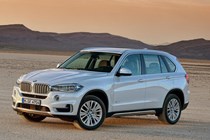
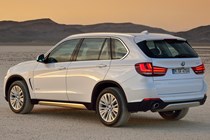
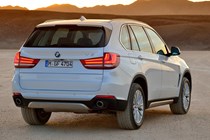
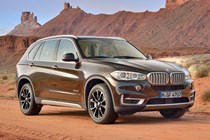
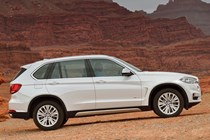
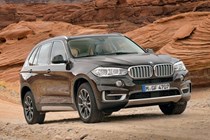
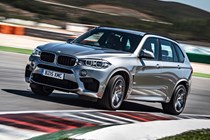
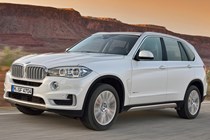
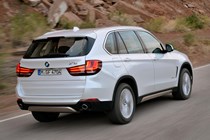
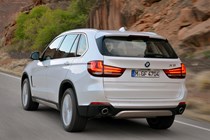
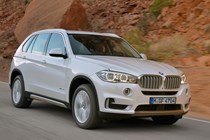
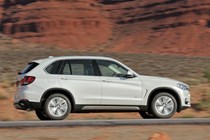
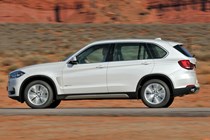
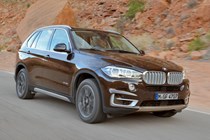
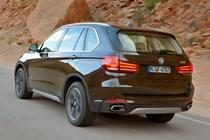
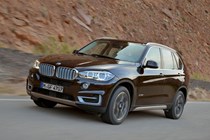
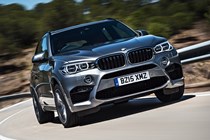
.jpg)
.jpg)
.jpg)
.jpg)
.jpg)
.jpg)
.jpg)
.jpg)
.jpg)
.jpg)
.jpg)
.jpg)
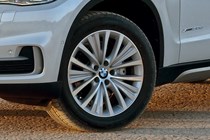
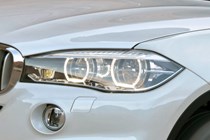
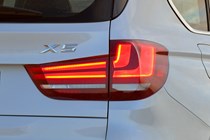
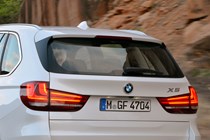
.jpg)
.jpg)
.jpg)
.jpg)
.jpg)
.jpg)
.jpg)
.jpg)
.jpg)
.jpg)
.jpg)
.jpg)
.jpg)
.jpg)
.jpg)
.jpg)
.jpg)
.jpg)
.jpg)
.jpg)
.jpg)
.jpg)
.jpg)
.jpg)
.jpg)
.jpg)
.jpg)

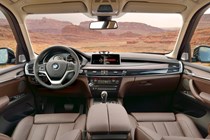
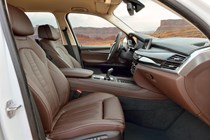


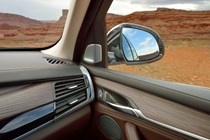
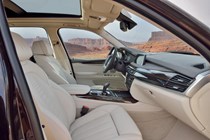
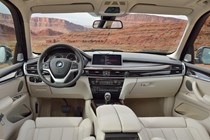
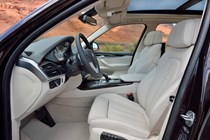
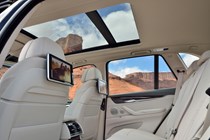
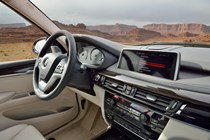
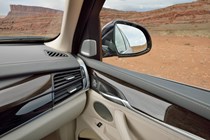
.jpg)
.jpg)
.jpg)
.jpg)
.jpg)
.jpg)
.jpg)
.jpg)
.jpg)
.jpg)
.jpg)
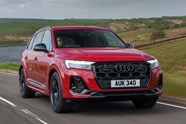

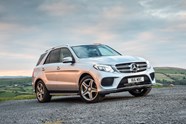

.jpg?quality=50)
.jpg?quality=50)
.jpg?quality=50)
.jpg?quality=50)
.jpg?quality=50)
.jpg?quality=50)
.jpg?quality=50)

















.jpg?quality=50)
.jpg?quality=50)
.jpg?quality=50)
.jpg?quality=50)
.jpg?quality=50)
.jpg?quality=50)
.jpg?quality=50)
.jpg?quality=50)
.jpg?quality=50)
.jpg?quality=50)
.jpg?quality=50)
.jpg?quality=50)




.jpg?quality=50)
.jpg?quality=50)
.jpg?quality=50)
.jpg?quality=50)
.jpg?quality=50)
.jpg?quality=50)
.jpg?quality=50)
.jpg?quality=50)
.jpg?quality=50)
.jpg?quality=50)
.jpg?quality=50)
.jpg?quality=50)
.jpg?quality=50)
.jpg?quality=50)
.jpg?quality=50)
.jpg?quality=50)
.jpg?quality=50)
.jpg?quality=50)
.jpg?quality=50)
.jpg?quality=50)
.jpg?quality=50)
.jpg?quality=50)
.jpg?quality=50)
.jpg?quality=50)
.jpg?quality=50)
.jpg?quality=50)
.jpg?quality=50)












.jpg?quality=50)
.jpg?quality=50)
.jpg?quality=50)
.jpg?quality=50)
.jpg?quality=50)
.jpg?quality=50)
.jpg?quality=50)
.jpg?quality=50)
.jpg?quality=50)
.jpg?quality=50)
.jpg?quality=50)